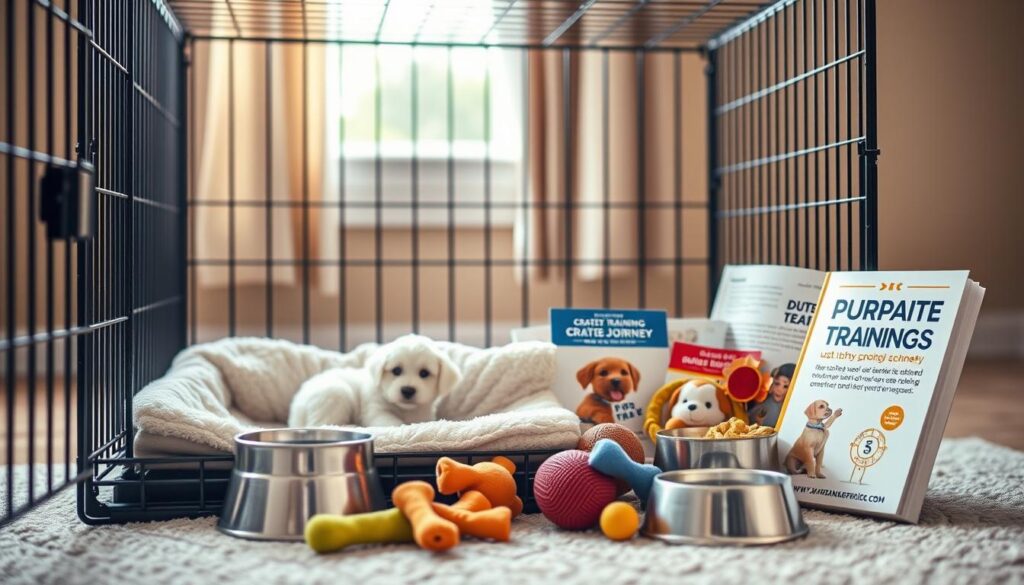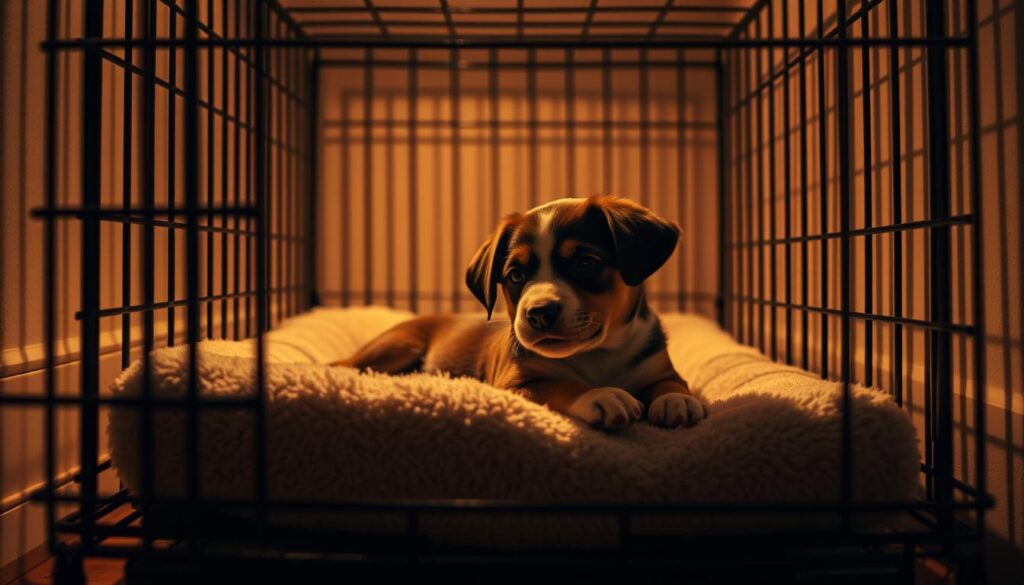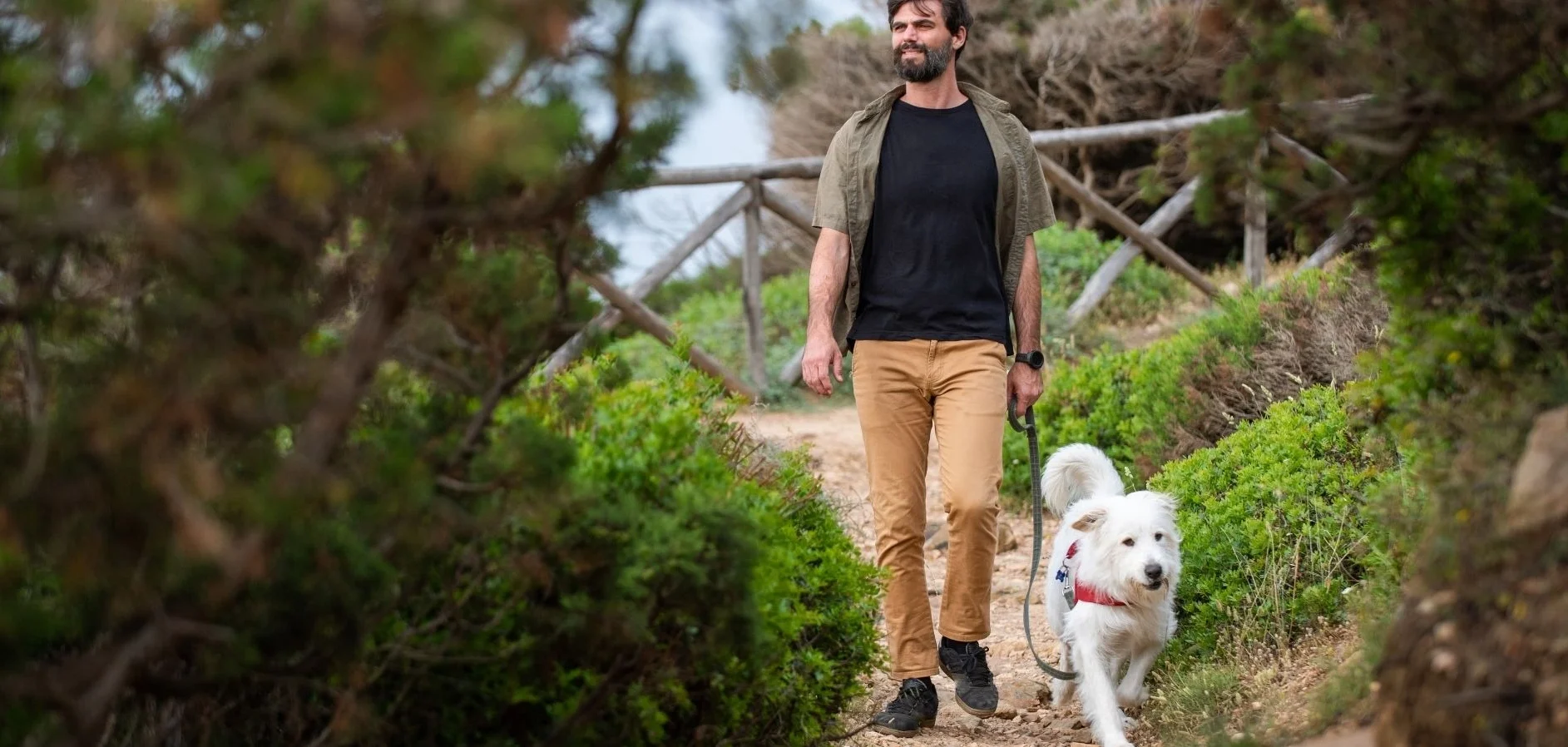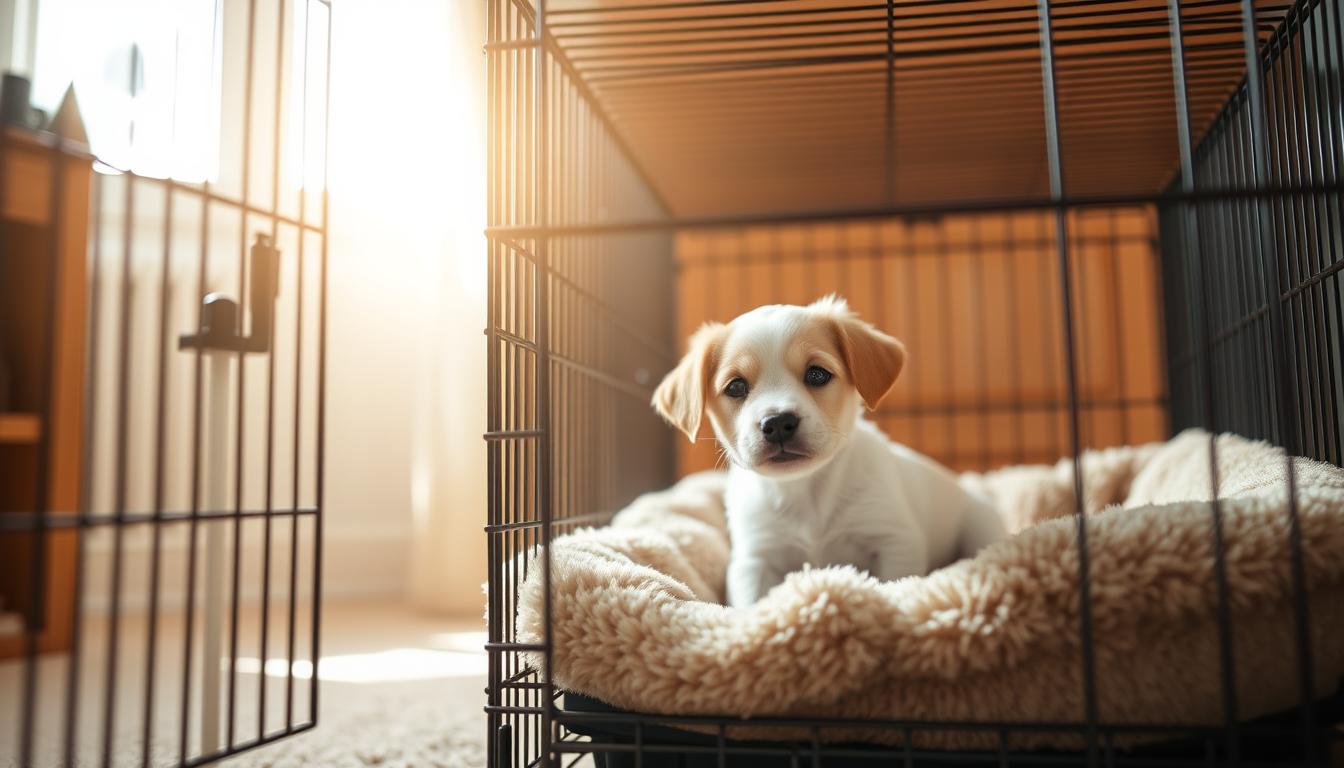How Do You Crate Train a Puppy? Easy and Gentle Methods
Table of Contents
How Do You Crate Train a Puppy? Bringing home a new puppy is an adventure filled with excitement and challenges. When I first welcomed my furry companion, I quickly realized that crate training puppies wasn’t just a method—it was a game-changing approach. It created a secure, loving environment for my four-legged friend.
Crate training is more than just a training technique. It’s about understanding your puppy’s natural instincts. It provides a safe, comfortable space that feels like their personal sanctuary. Learning how to crate train a puppy can transform your home and strengthen the bond between you and your new companion.
This guide will walk you through gentle, effective strategies to introduce your puppy to their crate. Making the process stress-free and positive for both of you. Whether you’re a first-time dog owner or looking to improve your training skills, you’ll discover practical steps to successful crate training.
Key Takeaways
- Crate training supports your puppy’s natural den instincts
- Creates a safe, personal space for your puppy
- Helps with housebreaking and behavioral development
- Reduces anxiety and provides security
- Promotes positive training experiences
Understanding the Importance of Crate Training for Puppies
Crate training is more than just keeping your puppy in a box. It’s a way to bond and help your puppy grow. It creates a safe, loving space that meets your puppy’s needs.
Dogs naturally like to have a cozy, safe spot. Crate training taps into this instinct. It turns the crate into a personal haven where your puppy feels secure and comfortable.
Natural Den Instincts and Safety Benefits
Your puppy craves a safe, enclosed area. Crate training helps understand this need. A crate acts like a den, offering your puppy:
- A sense of personal security
- Protection from household dangers
- A quiet retreat when overwhelmed
Role in Housebreaking and Behavioral Development
Crate training is vital for your puppy’s growth. It helps with routine, teaches bladder control, and provides structure. Puppies naturally avoid soiling their sleeping area, making the crate great for housebreaking.
Creating a Safe Haven for Your Puppy
Make the crate a positive place with pleasant experiences. Use treats, soft bedding, and favorite toys. Remember, patience and positive reinforcement are essential for successful crate training.
Selecting the Perfect Crate for Your Puppy
Choosing the best crate for puppy training is key to your dog’s growth. The right crate is your puppy’s safe spot. It also helps you learn how to crate train your puppy. Not all crates are the same, so picking the perfect one is important.
When looking for the best crate, you’ll find several types:
- Wire Crates: Versatile and adjustable, these offer great ventilation and visibility
- Plastic Crates: Great for travel, they provide a cozy, den-like space
- Soft-Sided Crates: Lightweight and easy to carry, perfect for calm puppies
The size of the crate is very important. Your puppy’s crate should let them stand, turn, and lie down easily. Look for an adjustable crate that grows with your puppy, saving you money later.
When choosing a crate, consider these factors:
- Your puppy’s current and future size
- The crate’s durability
- How easy it is to clean
- How portable you need it to be
Spending time to pick the right crate makes training your puppy easier and more fun. The goal is to create a cozy, safe space. This supports your puppy’s growth and helps with positive training habits.
How Do You Crate Train a Puppy?
Training a puppy to use a crate needs patience, consistency, and a positive attitude. Making crate training a positive experience can turn it into a fun bonding time for you and your puppy.
Crate training isn’t about punishing your puppy. It’s about giving them a safe, cozy space. The goal is to make the crate a welcoming den where your puppy feels safe and calm.
Introducing Your Puppy to the Crate
Begin by placing the crate in a spot where your puppy feels close to you. Follow these steps for a smooth introduction:
- Leave the crate door open and let your puppy explore freely
- Place soft blankets and familiar toys inside
- Never force your puppy into the crate
- Use treats to encourage natural curiosity
Using Positive Reinforcement Techniques
Positive reinforcement is key in crate training. Create good associations by:
- Offering high-value treats when your puppy enters the crate
- Praising your puppy softly and gently
- Feeding meals near or inside the crate
- Playing short, fun games around the crate
Building Duration Gradually
Begin with short crate sessions and gradually increase the time. Patience is your best training tool. Start with 5-10 minute intervals and then extend to longer periods, watching your puppy’s comfort.
Remember, every puppy is unique. What works for one might need adjustment for another.
Essential Crate Training Equipment and Supplies

Getting your puppy crate trained right means picking the right gear. This gear should keep your puppy comfy and safe. The right stuff can really help your crate training go smoothly.
Here are the key things you need for crate training puppies:
- Bedding: Choose something light, easy to wash, and simple to clean
- Durable chew-resistant toys for fun
- A small water bowl for drinking
- A soft blanket for cozy comfort
- Treats to reward good behavior
Your crate training kit should focus on comfort and cleanliness. Stay away from thick, plush bedding. It can soak up accidents and be hard to clean.
“The right equipment transforms crate training from a challenge to an enjoyable bonding experience.” – Professional Dog Trainer
Look for a crate that can grow with your puppy. This saves money and keeps training consistent. Rubber-backed, machine-washable crate mats are great for easy cleaning.
Invest in top-notch, puppy-specific items. They make the crate a welcoming space for your puppy.
Creating a Positive Crate Environment
Making the crate a cozy, welcoming space is key for crate training success. It should feel like a safe haven, not a punishment. With smart strategies, crate training can be a positive experience for your puppy.
Choosing the Right Location
Choosing the right spot for your puppy’s crate is important. It should be quiet but still allow for family interaction. Ideal spots include:
- A corner of the living room
- Near family gathering spaces
- Away from drafts or heat sources
- Close enough to see family members
Making the Crate Comfortable
Comfort is essential in crate training. Make the crate inviting with:
- Soft, washable bedding
- Blankets that smell like home
- Appropriate-sized cushions
- Temperature-appropriate coverings
Adding Appropriate Toys and Comfort Items
Choosing the right toys can make crate time enjoyable. Pick items that are:
- Puppy-safe and durable
- Size-appropriate
- Engaging but not overstimulating
- Easily washable
Pro tip: Rotate toys periodically to keep your puppy interested and prevent boredom.
Establishing a Consistent Training Schedule
Creating a good puppy crate training schedule is key for your dog’s growth and happiness. Puppies love routine, which makes them feel safe and know what to expect. A good crate training schedule can turn stress into a positive experience.
Your crate training schedule should cover important daily activities:
- Meal times
- Potty breaks
- Playtime
- Nap and sleep periods
- Training sessions
Being consistent is the secret to successful puppy crate training. Try to stick to a routine that fits your puppy’s natural habits and your home’s schedule.
| Age | Crate Time | Recommended Duration |
|---|---|---|
| 8-10 weeks | Short intervals | 30-60 minutes |
| 10-12 weeks | Moderate intervals | 1-2 hours |
| 3-6 months | Longer periods | 2-4 hours |
Pro tip: Always make crate time a positive experience with treats, quiet comfort, and calm interactions.
“Patience and consistency are your best tools in crate training.” – Professional Dog Trainer
Remember, every puppy is different. Tailor your crate training schedule to your dog’s unique needs, energy, and learning speed. Keep checking and adjusting the routine to keep things working well.
Managing Common Crate Training Challenges
Learning how to crate train a puppy can be tough. But with the right tips, you can overcome any hurdle. Every puppy is different, so it’s key to be patient and consistent.
Understanding Whining and Barking
Puppies often whine and bark when they’re learning to use their crate. It’s important to know the difference between real needs and just wanting attention. Here are some tips:
- Ignore attention-seeking whines
- Ensure recent bathroom breaks
- Check for physical discomfort
- Use calming background noise
Preventing Anxiety and Stress
To reduce crate anxiety, you need to be gentle. Create positive associations by following these tips:
- Use treats and favorite toys
- Keep initial crate sessions short
- Never use the crate as punishment
- Maintain a consistent routine
Addressing Crate Accidents
| Accident Type | Recommended Action |
|---|---|
| Frequent Urination | Increase bathroom breaks |
| Anxiety-Related Accidents | Reduce crate time, provide comfort |
| Medical Concerns | Consult veterinarian |
Remember, crate training a puppy takes time. Be patient, consistent, and positive. Every challenge is a chance to grow closer and make your puppy feel safe.
Nighttime Crate Training Strategies

Training your puppy to sleep in a crate at night takes patience and a smart plan. Your puppy needs a cozy, safe place to sleep. This helps them learn good sleep habits.
Here are some important steps for crate training puppies at night:
- Start by placing the crate in your bedroom
- Make a bedtime routine that works every time
- Add calming items to the crate
- Deal with nighttime potty needs
The first nights might be tough. Your puppy will need time to get used to their new bed. Add a soft blanket or a favorite toy to the crate. This helps them feel more at ease.
Set up a bedtime routine that includes:
- A last potty break before bed
- Introduce the crate gently
- Keep the room quiet and calm
- Stay calm if your puppy whines
To make crate training successful at night, make the crate a positive place. Give your puppy treats and praise when they go into the crate on their own. This makes them see the crate as a safe spot.
| Nighttime Crate Training Tips | Recommended Actions |
|---|---|
| Crate Placement | Near your bedroom, away from drafts |
| Comfort Items | Soft blanket, familiar toy |
| Potty Breaks | Last bathroom trip before bed |
| Typical Duration | 2-4 weeks for complete adaptation |
Remember, being consistent is crucial in crate training puppies. Each night will get easier as your puppy gets more comfortable in their bed.
Avoiding Common Crate Training Mistakes
Crate training your puppy needs careful attention to avoid mistakes. Knowing the crate training do’s and don’ts helps make it a positive experience for your puppy.
One big mistake is using the crate as a punishment. Your puppy should see the crate as a safe, cozy place, not a place of punishment or isolation.
- Never force your puppy into the crate
- Avoid using the crate as a time-out location
- Prevent extended confinement periods
Managing time is key in puppy crate training. Puppies can’t stay in crates for too long. They need breaks, social time, and exercise.
“A crate should be a safe space, not a prison” – Professional Dog Trainers
Experts say to follow specific crate time guidelines based on your puppy’s age:
| Puppy Age | Maximum Crate Time |
|---|---|
| 8-10 weeks | 1 hour |
| 11-14 weeks | 2 hours |
| 15-16 weeks | 3 hours |
Look for signs of stress or anxiety during crate training. If your puppy seems uncomfortable, change your approach. You might need to get help from a professional dog trainer.
- Provide comfortable bedding
- Include favorite toys
- Maintain a positive, patient attitude
Remember, successful crate training is about creating a positive, supportive environment for your puppy’s growth and development.
Conclusion
Learning to crate train a puppy takes dedication and patience. Your effort will help your puppy feel safe and secure in their crate. It’s not about being perfect, but about being consistent and gentle.
Every puppy is different. Some might pick up crate training fast, while others need more time. It’s important to be calm and supportive, making the crate a safe place, not a punishment.
By using the tips from this guide, you’re setting your puppy up for success. Crate training is not just for now, but for a lifelong bond with your dog.
Be patient and stay positive. Your puppy will learn to see their crate as a cozy, safe spot. Crate training is a journey of growth and connection for both you and your puppy.
FAQ
How long does crate training a puppy typically take?
Crate training time varies. It depends on the puppy’s age, personality, and how often you train. Generally, it takes a few weeks to a couple of months. Puppies learn faster with consistent, positive training and rewards.
At what age should I start crate training my puppy?
Start crate training at 8 weeks old. Young puppies adapt quickly and learn to like their crate. Make sure the crate is safe and comfy for your puppy.
How long can a puppy stay in a crate during the day?
Puppies can stay in a crate for about an hour for each month of age. For example, an 8-week-old puppy should not be in the crate for more than 2 hours. Make sure they get enough exercise, breaks, and time outside the crate.
Is it cruel to crate train a puppy?
No, crate training is not cruel when done right. It uses a dog’s natural instinct for a safe space. Make the crate a positive place, never punish, and ensure they get enough exercise and breaks.
How do I stop my puppy from crying in the crate?
To reduce crying, make the crate a positive space by:
– Using treats and praise when they enter
– Adding comfy bedding and favorite toys
– Covering the crate to make it cozy
– Avoiding giving in to whining
– Ensuring they’ve had enough exercise and potty breaks before crate time
What size crate should I get for my puppy?
Choose a crate where your puppy can stand, turn, and lie down easily. For growing puppies, get an adjustable crate with a divider. The crate should be the right size to prevent bathroom use in one corner.
Can I use the crate for punishment?
Absolutely not. Punishing in the crate creates negative feelings and can cause anxiety. The crate should be a safe, positive space for your puppy.
How do I crate train a puppy at night?
For nighttime crate training:
– Place the crate in a quiet spot
– Have a consistent bedtime routine
– Take them out for a potty break before bed
– Use a comfy bed and calming items in the crate
– Expect some whining and avoid giving too much attention
– Gradually increase the crate time at night
What if my puppy has an accident in the crate?
If they have an accident:
– Clean the crate with an enzyme-based cleaner
– Don’t punish them
– Check your training approach
– Increase potty breaks
– Ensure the crate is the right size
– Consider a professional trainer if accidents keep happening
How can I make the crate more appealing to my puppy?
Make the crate appealing by:
– Adding soft, washable bedding
– Placing familiar-smelling items like a toy or blanket
– Using treat-dispensing toys
– Covering part of the crate for a den-like feel
– Feeding meals near or in the crate
– Never forcing them into the crate
There are no reviews yet. Be the first one to write one.


